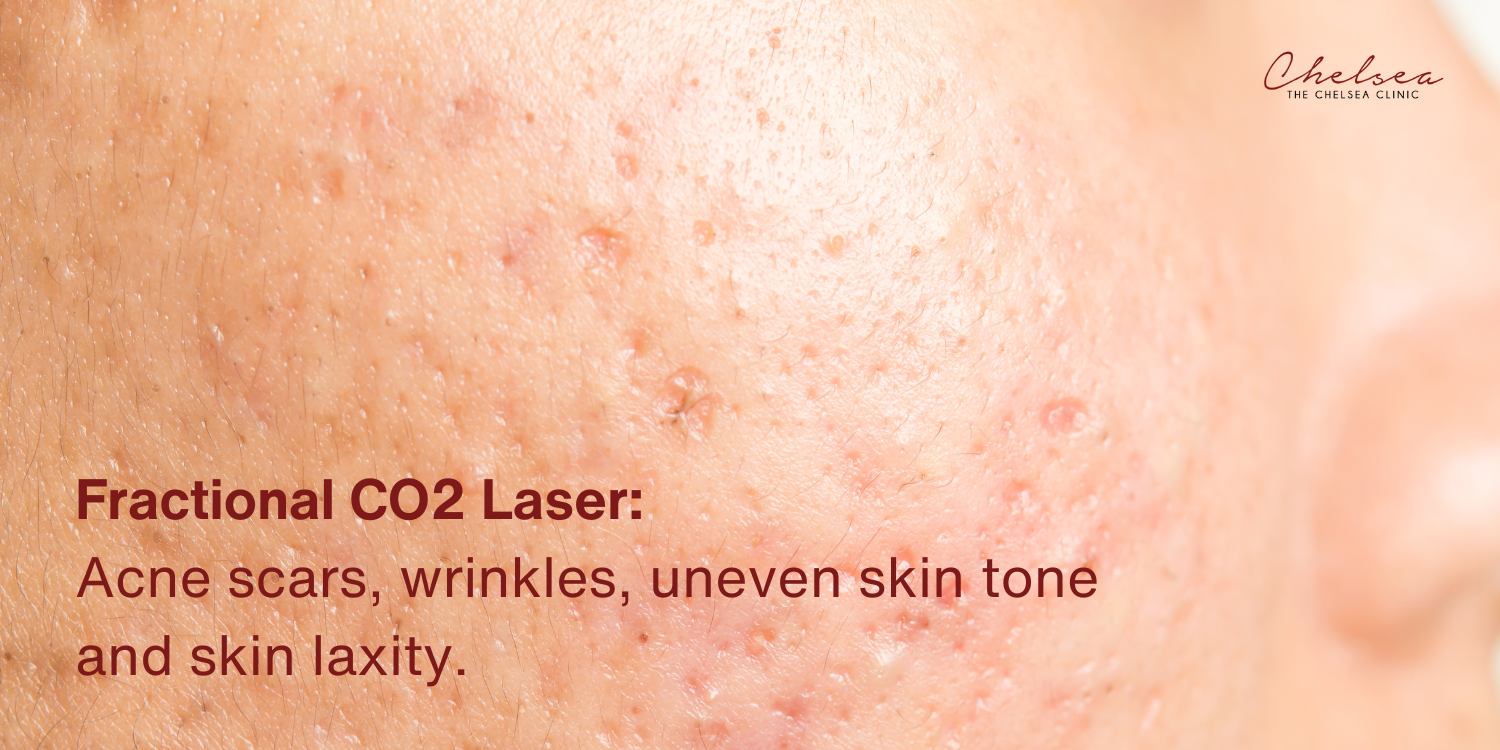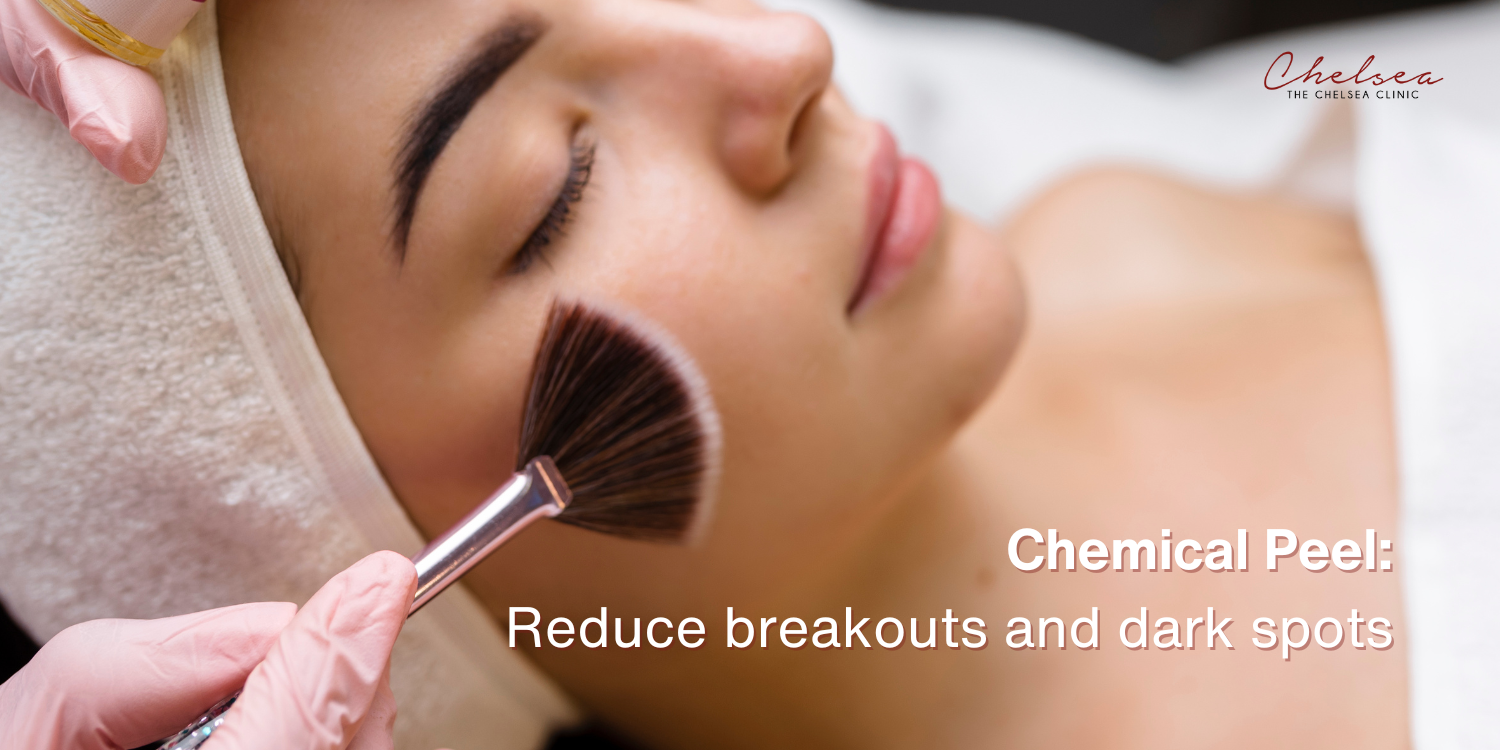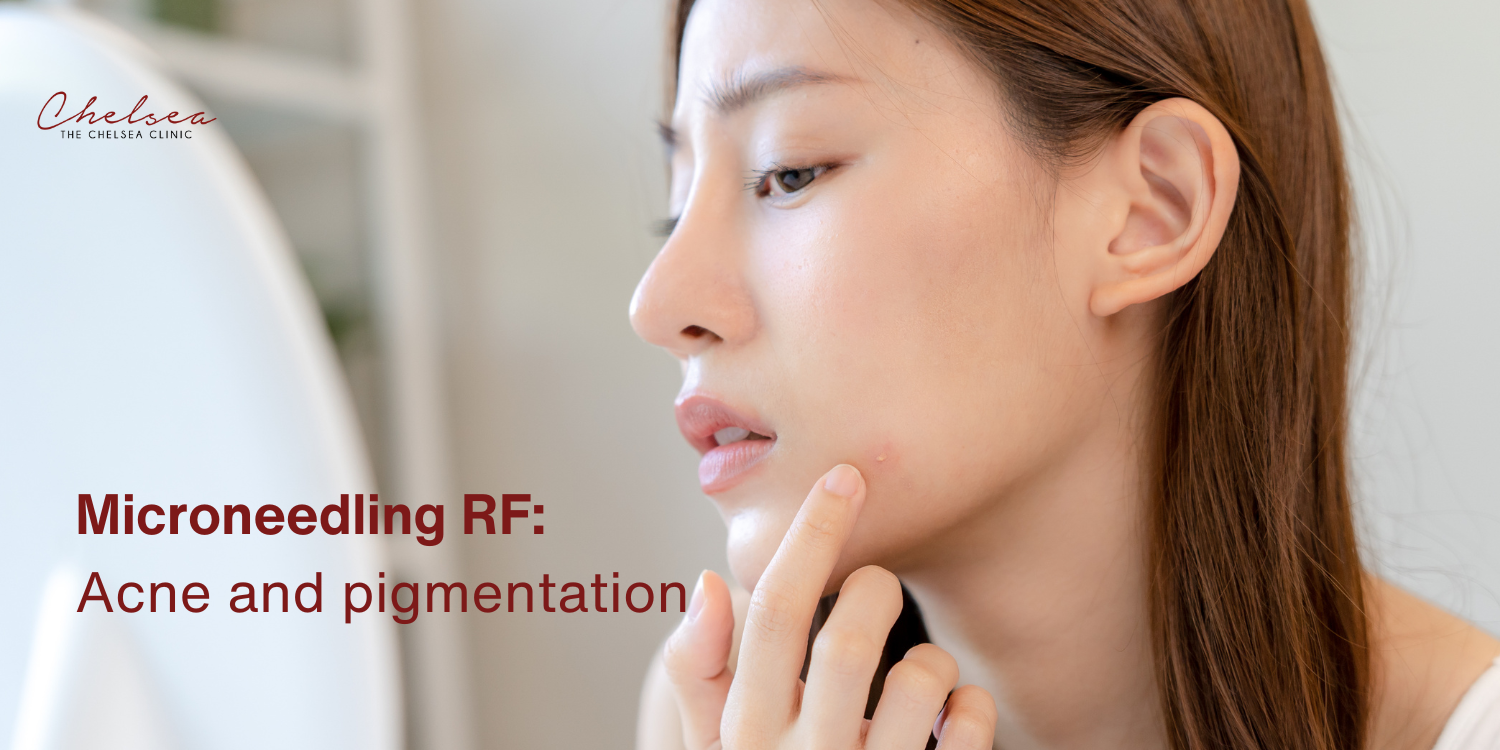ACNE SCAR
An inflammation of a pimple may damage the dermis, which is the deeper layer of the skin. Scars form when there is damage to the dermis. Before the treatment of acne, inflammation has to be reduced and this means no squeezing of pimples as it may cause damage to the dermis, leaving an acne scar.
What are the types of acne scars?
Post-inflammatory hyperpigmentation (PIH) refers to dark spots left behind by pimples, which typically fade over time. Depressed scars, including several types, can also occur: ice pick scars, which are narrow and deep; boxcar scars, which are wider and shallower; and rolling scars, where the skin appears to have ripples. Additionally, hypertrophic scars and keloids form as raised, lumpy areas on the skin.
Besides treatment and prevention, what else can be done about acne scars?
Dark spots (PIH) left by pimples typically fade over time, but this process can take a while. Lightening creams and laser toning can help speed up the clearance. Chemical peels can also help in reducing PIH. Using a suitable sunscreen is essential to minimize further pigmentation.
Depressed acne scars may improve with techniques like subcision and fractional laser treatment. Fractional laser creates controlled, pixelated injuries to the skin, stimulating the healing process and collagen production, which can help repair scars and make them less noticeable.
What about hypertrophic scars and keloids?
Hypertrophic scars and keloids often develop after chest or back acne, though they can also appear on the face. These scars can be treated with steroid injections, which help flatten the scar tissue.
Laser treatments and topical creams may help improve acne scars, but achieving results requires consistent and ongoing care. It’s essential to treat acne early to prevent scarring. Treatment for acne scars will be prescribed after a consultation, where a doctor can recommend suitable options based on diagnosis and ensure patients make an informed decision.
Fractional CO2 laser

Fractional CO2 lasers use carbon dioxide to remove the outer layer of skin while stimulating the regeneration of healthy skin underneath. These lasers are commonly used to improve conditions such as depressed acne scars, deep wrinkles, uneven skin tone, texture, and skin laxity. The fractional laser creates controlled injuries to the skin in a pixelated pattern, allowing healthy tissue in between to heal and stimulate collagen production, which helps repair scars and make them less visible.
The procedure has a short downtime of about 5 days. During this period, the skin will become red or pink, then brown, before peeling off to reveal fresher, healthier-looking skin. Treatments are typically spaced 2 months apart, with the number of sessions varying depending on the condition of the skin.
SKINBOOSTERS

Non-surgical cosmetic procedures such as dermal fillers (hyaluronic acid fillers) and Skinboosters are used to address various skin concerns. Skinboosters contain hyaluronic acid, which deeply hydrates the skin while stimulating collagen production. This helps improve skin texture, reduce pore size, and provide anti-aging and skin-brightening benefits.
Skinboosters are injected using either a dermal injector gun or the traditional hand injection technique. Once injected, the hyaluronic acid attracts up to 1,000 times its weight in water, significantly enhancing the skin’s hydration levels.
Skinboosters can help with conditions such as pigmentation, melasma, inflamed skin, sagging, and enlarged pores.
By acting as water reservoirs, Skinboosters absorb and retain moisture, providing long-term hydration. They can also assist in reversing UV damage and improving skin texture and elasticity through collagen and elastin stimulation, resulting in a more radiant appearance.
Chemical peel (AHA)

Chemical peel treatments using Alpha Hydroxy Acids (AHA) are commonly used to address breakouts, blackheads, and dark spots.
An AHA chemical peel works by removing dead skin cells from the epidermis, helping to brighten dull skin and improve overall skin tone and texture. Unlike physical exfoliants, chemical peels do not involve scrubbing. This treatment can penetrate deeper layers of the skin, promoting collagen production, improving the firmness of connective tissues, and enhancing the skin’s moisture levels.
Microneedling RF

Microneedling-RF is a recent advancement in microneedling technology that combines Pulsed Wave and Continuous Wave Radio Frequency (RF) to treat abnormal blood vessels and tissues. Microneedling-RF is used to address conditions such as increased pigmentation, vascular lesions, melasma, and rosacea, and has shown effectiveness in treating various skin concerns, including wrinkles, redness, acne scars, enlarged pores, and overall skin texture and appearance.
Dual Wave RF Microneedling System
The system uses both Continuous Wave (CW) and Pulsed Wave (PW) modes, which have been proven effective and safe through clinical studies.
Bipolar Non-insulated Electrode System
Microneedling-RF employs bipolar non-insulated microneedle electrodes to deliver a uniform electric field across all dermal layers. This maximizes treatment results, especially for melasma, rosacea, and post-inflammatory hyperpigmentation (PIH), while also aiding in skin tightening and other benefits through the CW modes.
Robotic Production System
The microneedles are precisely manufactured by a robotic system, ensuring accurate targeting and uniform penetration depth during treatment.
For inquiries about face, hair, eye, or body concerns—such as pigmentation, acne scars, hair thinning, dark circles, or cellulite—feel free to reach out. Submit your enquiry below, and our team will get back to you soon!
